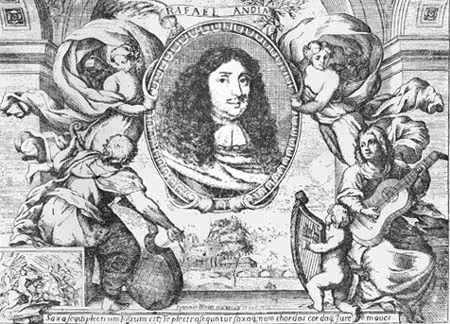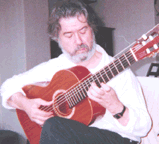
Rafael Andia, stemming from Spanish Republican diaspora, was born in France in 1942. His guitar career is circular, from flamenco in his youth to baroque and classical guitar. This diversity has led him to face with a special look at the Spanish classics - particularly Joaquín Turina, Isaac Albéniz and Manuel de Falla - materialized in complete or monographic recordings. He proposed original techniques, sometimes inherited from the flamenco and oriented to contemporary music, to the group l’Itinéraire and thus created, edited and engraved works for solo guitar ranging from André Jolivet to Tristan Murail. Rafael Andia also explored the territories of the baroque guitar on ancient instruments at the CNRS; he played in the baroque dance group l’Éclat des Muses, and recorded the complete works of Robert de Visée by Harmonia Mundi. His original compositions, between flamenco and classical, are gathered in a CD produced by Solstice. His essay Libertés et déterminismes de la guitare, a testimony, Labyrinthes d'un guitariste, a novel on Spanish war, Rasgueados, another on Francesco Corbetta, Guitarre Royalle; all were published by l’Harmattan (Paris).
He taches classical and baroque guitar at the École normale de musique de Paris since 1971.
Rafael ANDIA, a paradoxical personality, does not hate to go against the general trend. He cultivated all the guitar styles, except those which came to us from America, and in spite of that or perhaps thanks to that, he is a territory discoverer. That of the past , the astonishing “baroque” guitar of His Majesty Louis the Fourteenth and of the Spanish Inquisition, rich with its about 15000 pages of tablature music that he had to decipher and clear. But also the new territory which, with the progress of the century, opens each day under our feet (and under his fingers): To initiate a new repertory and for this reason to propose to the composers of the avant-garde original techniques suitable to satisfy them. That goes from work on the colors and the timbres to the repetitive techniques while passing through organologic modifications. This so-called “different virtuosity”, new vocabulary which these composers will draw from, Andia diffuses it to dozens of them in a booklet which constitutes a true small dictionary of the modern guitar language which could have been entitled : How not to perpetuate the "writing" for the guitar.
Sometimes Rafael ANDIA gets overwhelmed while speaking about another guitar, a “true” guitar. For him, there is true emotion only in creation and true creation in sincerity. And definitively, his guitar “sounds true”…
María Germain
